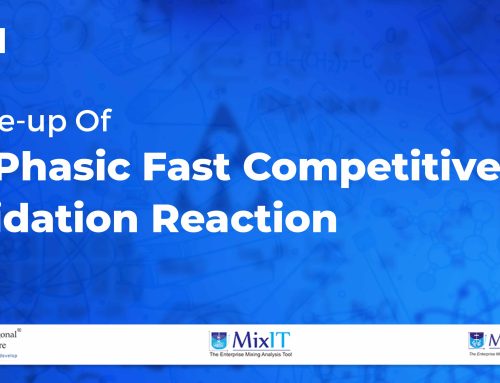San Antonio, TX, USA, June 8th, 2016
When scaling systems involving immiscible fluids, the final product attributes are largely dependent on the droplet size distribution of the dispersed phase. A traditional approach to scale up is to rely on the power per volume. Additional parameters considered may include blend times and volume turnover time. Some may even estimate strain rate. In our experience while these macroscopic parameters are very important to scale up, we have run into a number of instances where droplet (particle) size distribution do not match between lab, pilot and plant even when these parameters are in the desired range. In such cases we have found that the strain rate history between the systems are different and is an important parameter that one cannot afford to ignore.
In liquid-liquid systems it is important for the fluid parcels to experience a similar shear history. This is not just the value of the shear rate but the amount of time these fluid parcels experience the various shear rates. The shear rate around the impeller is extremely high. This zone is called the deformation zone where break up is dominant. Away from the impeller the shear rates can drop dramatically in the relaxation zone where coalescence is dominant.
It is important to determine the size of the deformation zone and relaxation zone in the tank and also the amount of time the fluid parcels spend in these zones. If you can match the strain rate histories then you have subjected the fluid parcels to very similar environments across scale and your probability of matching product attributes is very high.
How do we calculate the strain rate histories?
With a 3-D CFD analysis one can easily obtain these parameters which are otherwise difficult to calculate.Fluid parcel motion in the tank can be tracked and the shear rates they experience in the tank can be recorded. This can then be plotted to provide the histograms. The image below shows the percent time spent in various strain rate zones in a stirred tank. Such a plot can be readily generated for lab, pilot and plant systems. This is combinations with the macroscopic parameters can cut down your scale up time significantly. This concept can be applied to a number of systems that rely on shear to generate droplets including stirred tanks, rotor-stator systems, external pump loops, valves etc.
Tridiagonal Solutions Inc is an advanced engineering solutions provider with expertise in process performance enhancement and product development solutions for industrial clients worldwide. Their portfolio includes process engineering, CFD, EFD, Discrete Element Modeling services and chemical mixing simulation products . Tridiagonal Solutions caters to the Chemical and Process, Oil and Gas, Consumer goods, Food, Electronics, Power Generation and Healthcare Industries. For more information please visit www.tridiagonal.com or call (210) 858-6192.
Tridiagonal Solutions Inc | 12703 Spectrum Drive | San Antonio | TX 78249 | USA
newsletter-mixit@Tridiagonal.com
Reference Links:









Leave A Comment